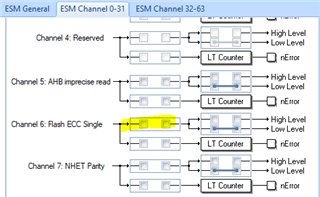Other Parts Discussed in Thread: UNIFLASH, HALCOGEN
Hi Team,
First, I want to use the ECC capabilities of the chip, including flash ECC, RAM ECC, and I want to know how to enable ECC on flash or RAM. And you want to know how to test the ECC functionality with your code (in other words, is there a way to simulate ECC single error to verify ECC single error correction, and is there a way to emulate ECC double error to verify ECC double error detection)
Could you help check this case ?Thanks.
Best Regards,
Ben




